Inspiring new memoir details reality of living through devastating tumour diagnosis
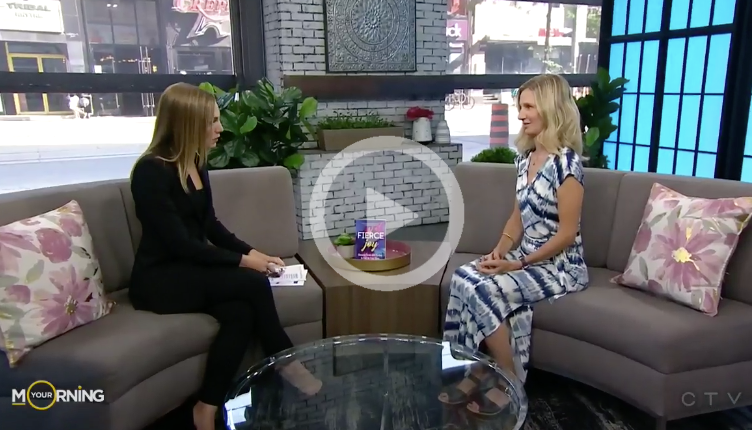

Inspiring new memoir details reality of living through devastating tumour diagnosis
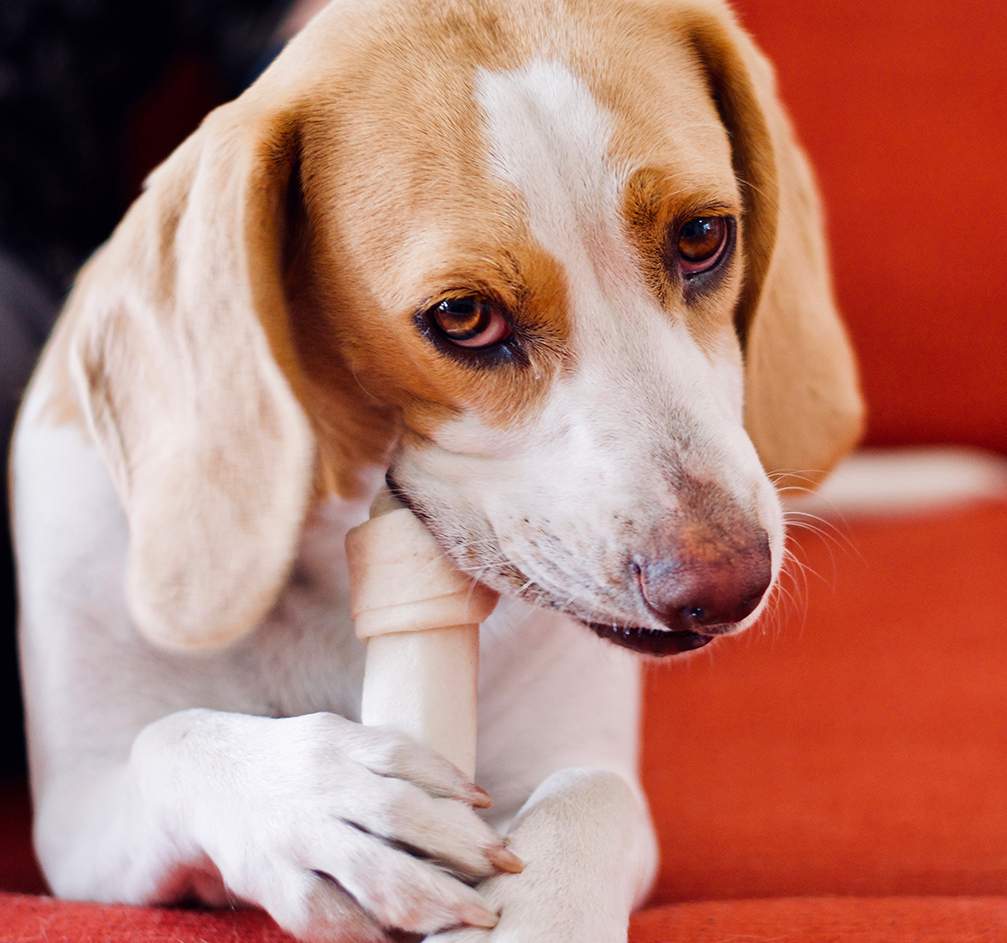
Intermittent fasting from food is all the rage. But have you ever tried a Worry Fast? Take a break from worrying and free up your mental energy. You’ll have more space to think of solutions, to be inspired creatively, or to learn dance steps!
Worry used to be my secret, stupid, superpower. But not anymore. I find that short, concentrated efforts to break the habit of worrying stops the unhealthy pattern. I adapted this Worry Fast from the Ananda Meditation Retreat Center.
Did you know that the definition of “To worry” is “to drag around with the teeth.” You can’t control having thoughts, but you can choose which ones to let go of, and which ones to drag around with you all day, like a dog with a bone.
When you wake up, think, “All my worries of the night are cast out, and for one hour, I refuse to worry. No matter how troublesome the news is or how big the uncertainties are, I refuse to waste energy.”
At 7am, say: “I release all worries.”
At noon, say, “I am cheerful. I will not worry.”
At night, repeat, “I no longer feed the old pattern.” Here’s a longer version: “No matter how tempting it is to indulge in a worry feast, I will resist. I no longer feed the old, unhealthy pattern of worrying.”
Try it for seven days and let me know if you notice any subtle changes!
Love,
Susie
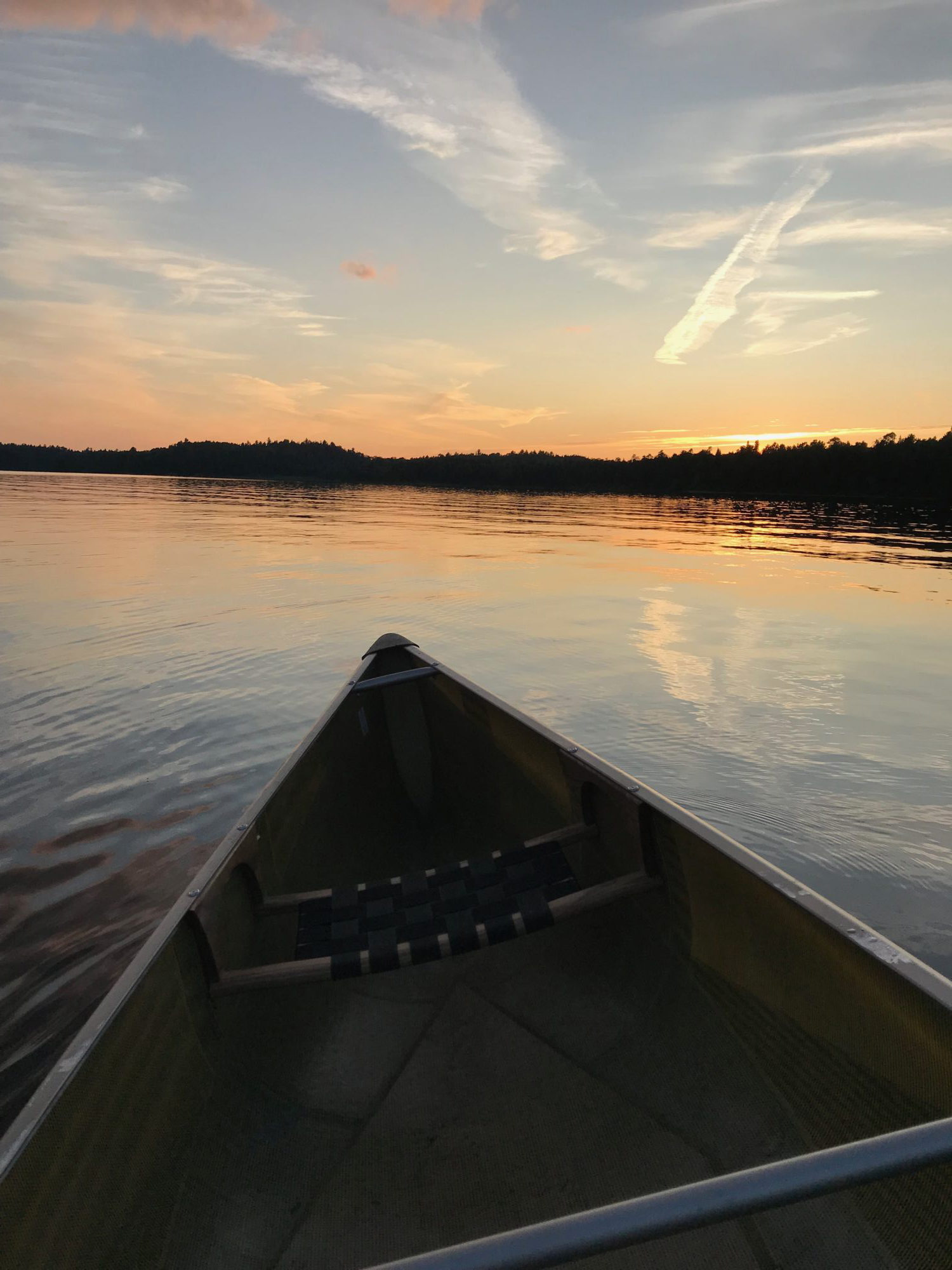
In July, while I was on my Surrender Experiment, there were too many layers of uncertainty for me to handle with grace. Kurt was out of work and the kids were out of contact (at wilderness camp). Also, I was promoting the book with uncertain results, and I was waiting to hear if I’d made it into a clinical trial. Meanwhile, refugee children were being detained at the border in unspeakable conditions.
I felt way out of balance, heavy on despair, and light on trust in a bright future. How can I steer us in a better, safer direction? I desperately “needed” to edit Kurt’s resumé, track the weather on the river where Cole was paddling, work harder each day to sell books, and make this disease and the suffering at the border go away. But none of those desires and behaviors were getting me closer to finding joy.
To raise the vibration from low to high, I stayed committed to the rules of my surrender experiment and went canoeing.
So Kurt and I flew to Toronto, then drove six hours to Temagami, a wilderness area in northern Ontario that I paddled almost every summer as a child. It’s not unusual to go for days on its vast lakes without seeing another person. The idea was to do a four-day canoe trip just as grown-ups, surrendering to nature’s whims, before we picked up both kids from camp. It would be peaceful! Fun! Romantic! And it was, sort of, but definitely not at first.
At first, it was uncomfortable and hard. Without any income coming into our home, it felt irresponsible to leave my desk and not promote the book. Plus, it had been thirty years since I’d been on a canoe trip. I only remembered the clear water, bright stars, and joyful campfire conversations. I had forgotten that it’s a lot of work to load and unload a canoe, to paddle long hours into a strong headwind, and to carry everything from lake to lake over muddy ground and sharp rocks. (And the bulk of that work fell on Kurt’s shoulders as I can’t carry heavy weight anymore!)
Between the two of us, we had 1.5 pairs of shoes and a single pair of sunglasses. In the packing rush, Kurt forgot shoes other than flip flops which soon broke, and I left my sunnies in the car. I steered the canoe with my eyes closed because the sun reflecting off the water felt like a laser shooting into my corneas. Not to mention that the mosquitoes were so thick, we had to speak to one another in telegram-like sentences. If our lips were open for longer than a second, dozens of mozzies would rush in our mouths.
After a long day, Kurt looked at me through a cloud of mosquitoes and said,
“It’s a particular kind of fun, isn’t it?”
Here’s why it’s worth it:
It took me two days to shed my city pace and find nature’s pace. Two days to move from wanting and restlessness to gratitude and awe. On day three, I remember standing in the forest thinking, I don’t need anything. We have everything we need in this light pack. (Ok. Maybe we could use one right flip flop, men’s size 11, and one pair of sunglasses.)
If you lean too far to one side, you’ll capsize. If you move too quickly or with too much force, you’ll capsize. And if you focus on the future, you’ll get off course. One day I discovered this last point while experimenting with trying to go as straight as possible in the canoe for one hundred meters. My typical method is to pick a spot far on the horizon and aim for it, using a j-stroke paddle technique. Concentrating on the horizon works, but every once in a while, the canoe suddenly and inexplicably dives left or dives right, and it requires a flurry of paddle strokes to get back on track. But because I didn’t have my sunglasses, I focused on the spot where my paddle entered the water instead of way out ahead. I put my attention on the wooden paddle blade right in front of me, and all my concentration on making the smoothest, steadiest stroke I could. The canoe slid straight across the lake for one, two, then three hundred meters (at least) without diving off course once. Being in a canoe teaches me rhythm and grace.
In Nature, the surrender experiment felt easy. At home, it’s more difficult for me to let go. I imagine that I am the one in control of outcomes. But once we were outside all day and night, it was clear that I was not in charge. I didn’t have to make sure that the sun rose on time, that the stars would come out, that the white pines would stretch to the sky, or that the lakes filled with cool, calm waters. One evening, just when I could no longer take the mosquitoes buzzing around my head, a group of dragonflies glided past, silencing the air. Everything just seemed to work without me doing a thing.
When we paddled to shore on our last day, I cried. I wanted to stay out longer. I wasn’t ready to reach land, be found by the bugs, and re-enter the pace of cars. But I was ready to see the kids!! We didn’t extend our canoe trip, but maybe I’ll extend the surrender experiment for another 30 days…
Love,
Susie
P.S. Kurt got a job that he loves! And when I finally opened my email, there were three requests from major media sources wanting to know more about Fierce Joy. The next day, I was sitting in a TV studio in Toronto doing an interview for CTV’s Your Morning, and on CBC radio: Here & Now.
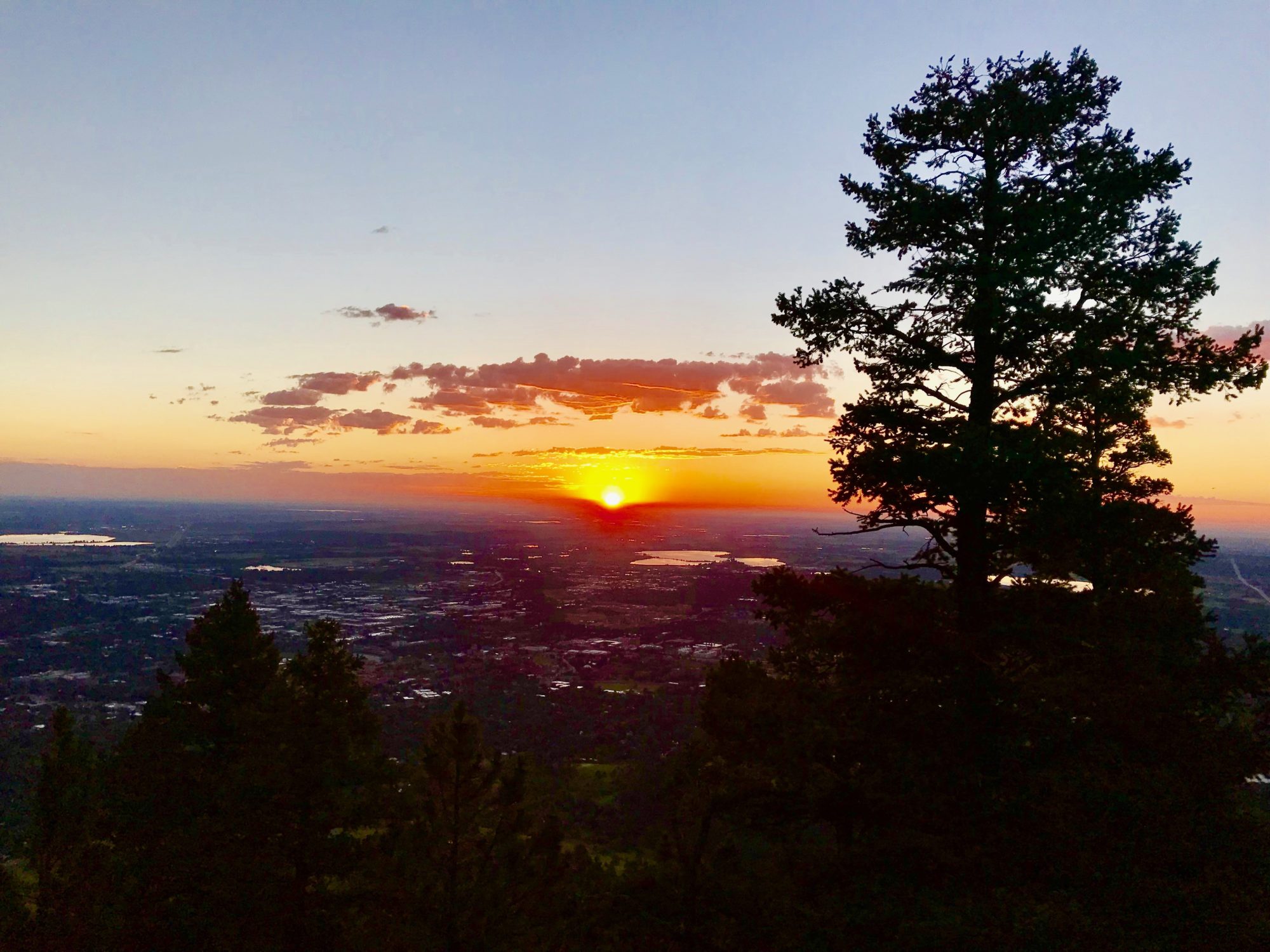
To surrender, I have to release my grip on the steering wheel of life. For thirty days, I’m practicing letting go and trusting life. Want to join me? We can start now, during this full moon, and go until the next full moon in August. I call it “The Surrender Experiment” after Michael Singer’s book by the same name.
The idea was born when I woke up angry one morning because nothing was going my way, despite my best efforts. My plan that day was to promote my memoir, Fierce Joy. “Oh great!” I thought. “I’m supposed to be the spokesperson for joy and all I feel is anger.”
I want to find a different way. Can I surrender to life without trying to make everything go the way I want it to go? What if I used my strong will to engage with life rather than fight it? What if I trusted that life usually works out, sometimes even better than I imagined?
The rules:
Day 1 of the experiment:
The heat of the day is getting to me. To surrender to it instead of fight what I cannot control, I make dinner in my underwear. I am slicing a tomato when Susanne, the woman who is housesitting next door, walks right into our kitchen. (I forgot the front door was open.)
“The recycling truck comes tomorrow. Can I put some of my recycling in your bin?” She asks, without noticing or caring that I am half-naked. I hold a tea towel in front of me and try to be neighborly, offering to help with the recycling and asking her how she likes living on our street. “I love living this close to the mountains!” She says. “In fact, I’m waking up at 3:30 am to watch the sun rise tomorrow. Want to come?”
Oh no. Rule #2 says I must say yes.
“Yes?” I answer, with some hesitancy. Who wakes up voluntarily in the 3s?
I set two alarms, stumble in the dark to find my headlamp and meet her in the street the next morning. What happens next is strange. The road is blocked with police cars because of an accident. With the road closed, the mountain is closed, too. There goes our morning hike. But then we make a u-turn and there is another mountain looking at us. We decide to try to summit it instead before dawn. We end up on a steep, unfamiliar trail in the darkness. On the way up, we talk about how each of us is unsure of our next step in life. I hear myself say, “I just have to figure it out.”
At the top, I am certain that we need to sit in a particular spot to get the best view, but there is no way to get there safely. We try three times in three different ways, with no luck. Life leads us instead to a scrappy patch of ground. We sit down just as the flaming red sun breaks the horizon line and washes us in a rinse of warm air. Birds, as if on cue, start singing. A chipmunk runs by, then stops, and kisses my hand. A goldfinch feeds her young in a nest nearby. It’s all very Disney, and spectacular.
A few minutes earlier, I was frustrated because I couldn’t figure out how to reach the “best” place to sit. But the spot life chose for us was better than anything I could have imagined. And I didn’t have to do anything. It makes me laugh out loud with delight. I can relax! Yesterday, I didn’t know I was going to come on this hike, and now I am sitting in a stunningly beautiful place with a new friend. I didn’t plan this or see it coming.
Maybe I don’t need to “figure out” my next step so much as I need to be open to it walking into my kitchen while I am in my underwear. If this is Day 1, what are the next 29 days going to be like?
Stay tuned for Part II of my “Surrender Experiment” in the August newsletter…
Love,
Susie
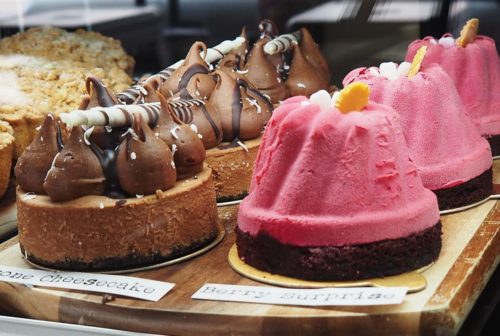
I accidentally discovered a great way to make a tough decision easy. I’ve never been good at making big decisions, until recently. One thing a life-altering illness teaches you is how to make a million decisions in a short amount of time, while facing enormous uncertainty.
Before, I used to take forever to decide anything because I wanted to be sure that I was making the right choice, especially if there were other people involved. When I was choosing whether to pack up everything and move the family west, it took me almost a year to decide. My husband Kurt was ready to go, but I was overwhelmed by the feeling of permanency around the choice. I couldn’t concentrate on anything but the push and pull of Should we stay? Should we go?
We moved. And it all worked out better than I imagined. Now it seems to me that I added a lot of extra suffering to that year with my inability to decide.
Since then, because of my diagnosis, we’ve made countless life-or-death decisions. At first, they all felt excruciating, until we figured out our personal systems for knowing what to do.
Kurt’s way is to build a spreadsheet that lists the options, the costs and benefits, and assigns rankings to each based on our values.
My way is to wait until everyone is out of the house, then I sit on the bed, in the quiet, with my eyes closed. Next, I invite Fear to tell me what to do.
I’ve heard this strategy described by The School of Life as “Ask your enemy.” The point is to invite an imaginary version of someone who wants your demise to the decision-making table. The rationale? We are so much better at knowing our weaknesses and our temptations than our strengths. It’s more effective to invite our “enemy” to tell us what to do.
In my case, my own mind is my worst enemy because it is run by my scared self, the voice of Fear. So I let Fear have the floor for a full five minutes. I listen to the worst-case scenarios, the “inevitable” losses, and the many disappointments to come. I let Fear tell me what to do.
And then I do the exact opposite. (Remember the Seinfeld episode when George Costanza experimented with doing the opposite of what he thought was right? He was on to something!)
I thought this was the quickest way to make a choice until recently. Now I know that there is an even faster way to get out of our scared minds and into the wisdom of the body.
Here is the simple question that guides me to make a tough decision easy. It comes from my brilliant friend, Koelle Simpson. I was telling her about the latest health-related decision I needed to make. She listened, then looked right at me and asked,
What would you do if you knew you couldn’t get it wrong?
The answer came to me immediately. It felt clear and obvious. And I knew instantly what to do.
Decisions don’t have to be painful, but our perfectionism steps in to tell us we’re going to get this wrong and our lives will be ruined forever. We forget that the only right decision is the one that is right for us. And we also forget that most decisions are reversible. Move away and don’t like it? Come back. Quit your job and regret it? Learn from it and move on.
What I like about this no-wrong-way question is it works to bypass the scared and confused mind. It shoots past Fear and goes directly to the heart of what we want, now. Don’t believe me? Practice asking yourself the question to make small decisions, like what to wear, what to eat, and who to spend time with for one week and let me know how it goes.
(By the way, Kurt’s spreadsheet came up with the same answer as I did when Koelle asked me the no-wrong-way question 😉
The way to build a life that is deeply rewarding, healthy, and full of peace is not by bending your life to fit through the right door. It is by going inward and finding who you are, one decision at a time. All you have to do to find your right answer is to ask yourself the right question.
What would you do if you knew you couldn’t get it wrong?
Love,
Susie
image credit: Knock Knock Pros
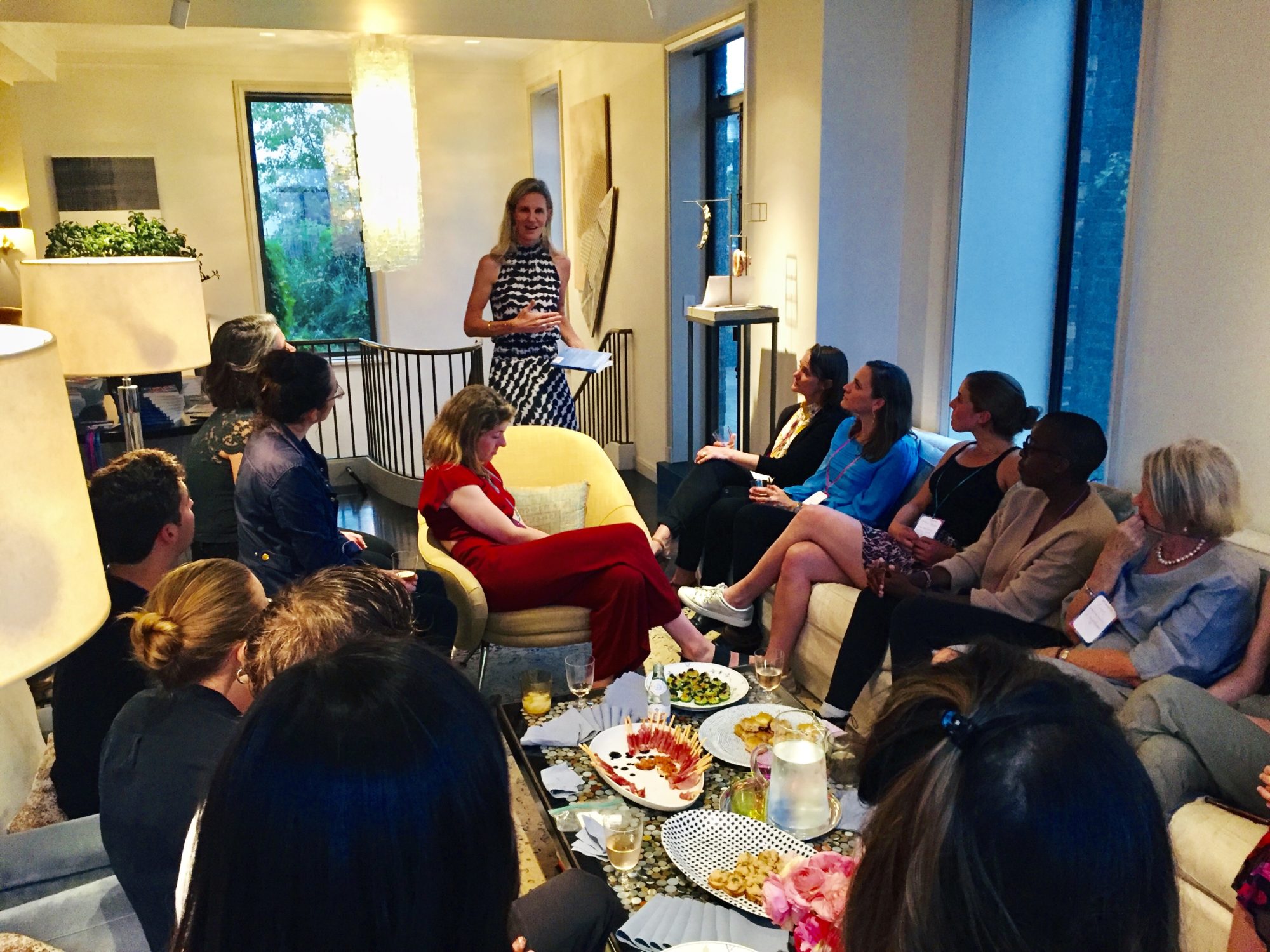
I had always heard that book tours were exciting, but exhausting. I wasn’t sure I was up for it. But it was important to thank our friends, living all across the country, for their encouragement and support on this journey.
Determined to create a tour that gave me energy rather than deplete it, I made 3 golden rules.
#1 Prioritize Joy. Inspired by our musician friend Gideon Irving who performs in homes instead of bars, I decided to have a series of house parties rather than bookstore events. I wanted guests to feel connected and have fun. And I had heard too many stories of writers showing up at bookstores, only to read to rows of empty chairs. So we had parties in Boulder, the Bay area, NYC and Boston (so far). We served Fierce cocktails and a Joy punch, danced, gave away prizes, talked about what makes us brave, and ate cake! (HUGE thanks to Valentina Iturbe-LaGrave & Rodrigo Garcia, Christine Carter & Mark Millstein, Mike & Kirsten Beckwith, Brooke & Dan Neidich, Mallory Neidich & Teddy Kalborg, Meg & Sam Steere, and Ellen & Bob Wright.)
#2 Include the family. It began with a question, Is it possible to integrate work and family? Yes! I brought the family with me on tour. We hacked the high costs of traveling by renting out our house on Air BnB, using points for flights, staying with friends, and finding taco stands instead of restaurants. It was 100% worth it because my favorite aspects of the tour so far have been when Hazel sang for the crowd or when Cole made new friends in the streets of NYC.
#3 Do what matters I have a handful of causes that are important to me.Girls education is one of them. And the organization that is knocking this important initiative out of the park is MAIA; Her Infinite Impact. Knowing I wanted to support them, I committed to giving some of the proceeds of book and T-shirt sales to MAIA. The result? People are buying more books because they know they are supporting a great cause. And I feel good knowing that my work is serving others. Educate a girl, save the world.
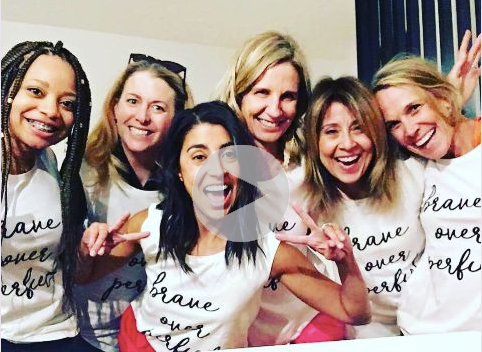
So many helping hands created the most magical night of my life. Thank you. We raised funds for MAIA and we danced until the next morning.
Watch this 4 min video by Hudson Ratzlaff
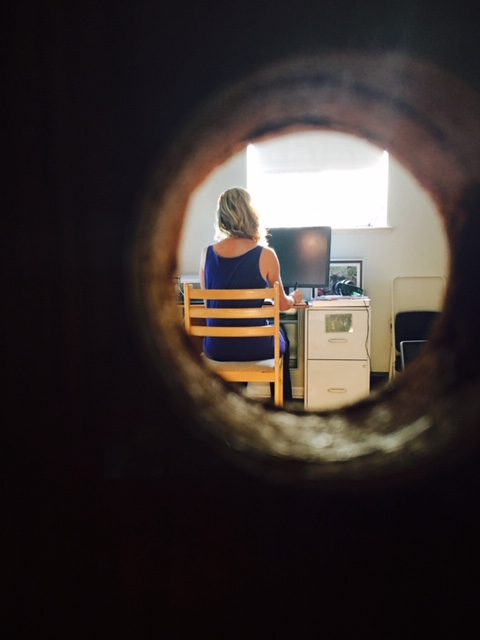
I had been looking forward to my book launch day for years. I fantasized about it, actually. In one of my fantasies of life after publishing, I am sitting in a white leather chair across from an interviewer on TV when she asks, “How does it feel to be a published author?” Before responding, I lean back with all the relaxed confidence in the world. I take a sip of my mimosa and say, “It feels amazing. I finally feel complete. Worthy. Free.” And the interviewer smiles a proud smile and the live studio audience jumps to their feet, applauding wildly.
The reality is that I woke up the morning of my book launch and took our daughter to the orthodontist. Then the drywall guy arrived because the ceiling in our kitchen was falling in chunks onto our stove. I had coffee with a dear friend, and that was nice. But a nurse called and interrupted us to let me know that my mammogram results were in, and they needed me to come back in for a biopsy. I walked home in the rain and sat down at my computer, writing a little and paying bills, before going to get groceries and making dinner. (By the way, the biopsy revealed benign little calcium nothings.)
I assumed that the day my book launched, the world would feel different. Sunnier. More loving. All that hard work would feel worth it. But like Mother’s Day, anniversaries, and birthdays, a book launch is just a day. And because of all the expectations and build-up, I found it hard to access gratitude. I began to feel resentful, like maybe my husband should have bought me flowers. Then I felt guilty for wanting the attention, and for the environmental impact of the cut-flower industry. Then I remembered that the book exposed my husband, and our family in a way that he never asked for, and that if anyone should receive flowers, maybe it should be him.
I also thought something would change in me on the inside; not only would the world feel different, but I would feel different. At peace. Happy. And it would be the kind of happy that stuck around forever. But I woke up feeling exactly the same as I did the day before the book launch. What I am learning is that I am just me. I am not some fantasy version of me. And this is my life. It is not flashy. I accept that those visions of leather chairs, TV audiences, and mimosas are just fantasies. There is no magic wand that turns my third cup of drip coffee into a mimosa. But I am also learning that that’s OK. I don’t even like mimosas.
I feel the truth in what the writer Anne Lamott says about publishing, “Publication is not all it is cracked up to be. But writing is. Writing has so much to give, so much to teach, so many surprises. That thing you had to force yourself to do—the actual act of writing—turns out to be the best part. It’s like discovering that while you thought you needed the tea ceremony for the caffeine, what you really needed was the tea ceremony. The act of writing turns out to be its own reward.”
What does it mean to have written this book? It means I understand myself and the world better. It means I made something with my own hands. It means I finished something I started. And it means that maybe others won’t need to go through several craniotomies to gain some of the wisdom I found.
The fantasies of accolades, TV interviews, and flowers are all great. But would I give everything for those? Would I give up my time with my children and friends? All my money? My walks in the mountains? No. Not likely.
Would I give up a lot in order to write? Yes. Absolutely.
In acceptance of the real is the true reward. In my real life, I get to write. I get to discover what I really think and feel by the simple act of putting pen to paper. I get to string words together on a page until they reveal a truth that is not just mine, but ours. I get to try to make sense of a world that often feels like it is in disarray, unfair, even chaotic. I get to face what I fear and work through it, one word at a time. I get to scribble and scratch and scribble again until my words create a summer landscape that anyone can step into, even when it’s winter. If you ask me, that is magic. And that is a fantasy worth living.
Love,
Susie
Please order a copy of Fierce Joy for yourself, a friend, a doctor’s office, or hospital waiting room.
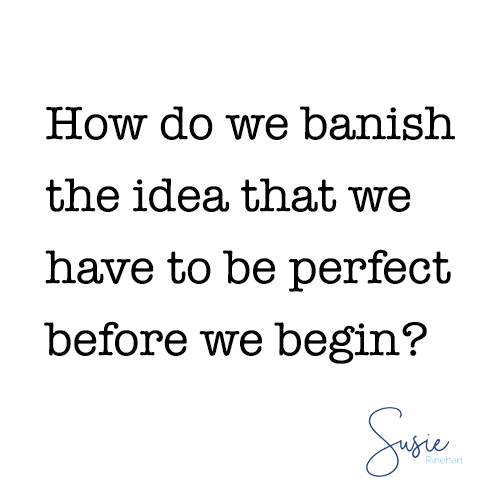
“How do we banish the idea that we have to be perfect before we begin?”
–from Fierce Joy
 My memoir, Fierce Joy is now available! It is everything I know about bravery as a woman, a partner, a parent, a leader, an athlete, an activist, and a brainstem tumor survivor. Reviewers say it’s fast-paced and beautiful and funny. I say, don’t forget that it’s a love story! This is the memoir I’ve been working on in the pre-dawn darkness every day for the past two and half years. It’s about showing up real in life and at work and what gets in the way, namely perfectionism. It’s about love and death and living life to its fullest. It’s about choosing joy over fear and brave over perfect. It’s about looking underneath our fears to find unlimited joy. It’s about how our striving, saving, and performing to do things the “right” way is making it impossible for us to show up real. It’s about how Fear has become a main character in our lives, and a dangerous obstacle to real change.
My memoir, Fierce Joy is now available! It is everything I know about bravery as a woman, a partner, a parent, a leader, an athlete, an activist, and a brainstem tumor survivor. Reviewers say it’s fast-paced and beautiful and funny. I say, don’t forget that it’s a love story! This is the memoir I’ve been working on in the pre-dawn darkness every day for the past two and half years. It’s about showing up real in life and at work and what gets in the way, namely perfectionism. It’s about love and death and living life to its fullest. It’s about choosing joy over fear and brave over perfect. It’s about looking underneath our fears to find unlimited joy. It’s about how our striving, saving, and performing to do things the “right” way is making it impossible for us to show up real. It’s about how Fear has become a main character in our lives, and a dangerous obstacle to real change.
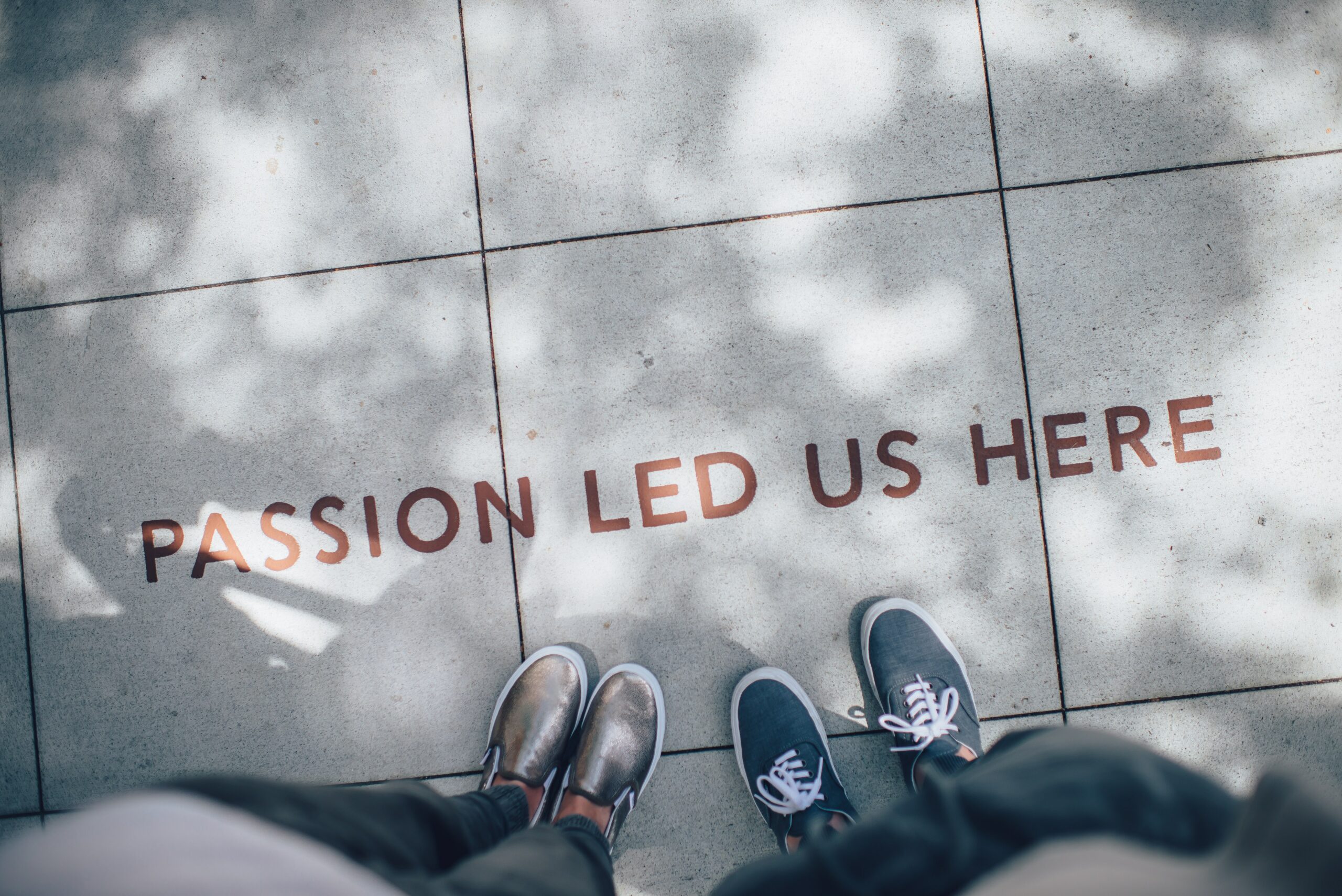
“Build a community that celebrates progress, not perfectionism. Ask yourself, then your colleagues and friends, “Where did you make progress today?” instead of “What did you get done today?” … Celebrate persistence, vulnerability, and contributions to the common good, not merely accomplishments.”
–from Fierce Joy
 My memoir, Fierce Joy is now available! It is everything I know about bravery as a woman, a partner, a parent, a leader, an athlete, an activist, and a brainstem tumor survivor. Reviewers say it’s fast-paced and beautiful and funny. I say, don’t forget that it’s a love story! This is the memoir I’ve been working on in the pre-dawn darkness every day for the past two and half years. It’s about showing up real in life and at work and what gets in the way, namely perfectionism. It’s about love and death and living life to its fullest. It’s about choosing joy over fear and brave over perfect. It’s about looking underneath our fears to find unlimited joy. It’s about how our striving, saving, and performing to do things the “right” way is making it impossible for us to show up real. It’s about how Fear has become a main character in our lives, and a dangerous obstacle to real change.
My memoir, Fierce Joy is now available! It is everything I know about bravery as a woman, a partner, a parent, a leader, an athlete, an activist, and a brainstem tumor survivor. Reviewers say it’s fast-paced and beautiful and funny. I say, don’t forget that it’s a love story! This is the memoir I’ve been working on in the pre-dawn darkness every day for the past two and half years. It’s about showing up real in life and at work and what gets in the way, namely perfectionism. It’s about love and death and living life to its fullest. It’s about choosing joy over fear and brave over perfect. It’s about looking underneath our fears to find unlimited joy. It’s about how our striving, saving, and performing to do things the “right” way is making it impossible for us to show up real. It’s about how Fear has become a main character in our lives, and a dangerous obstacle to real change.